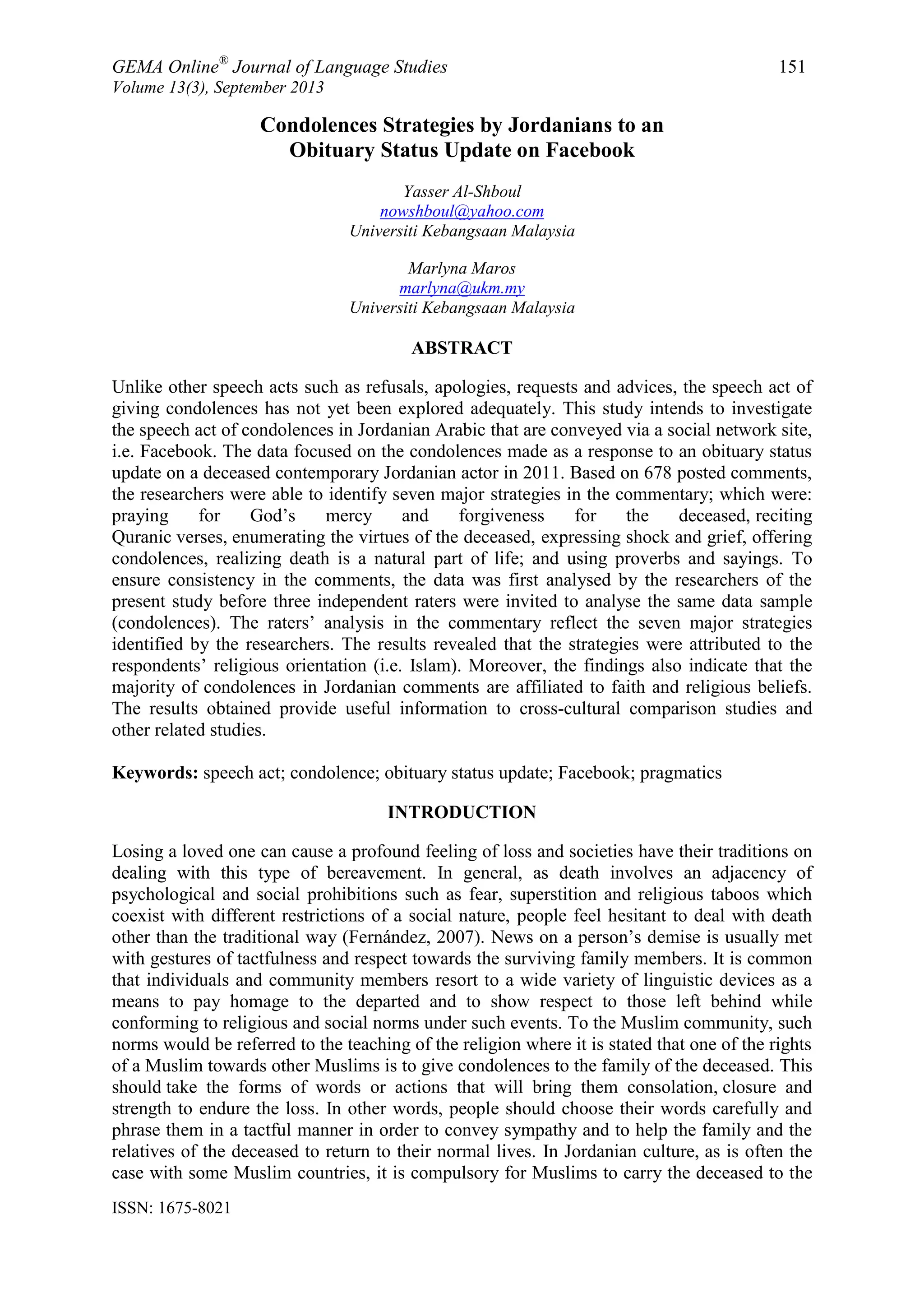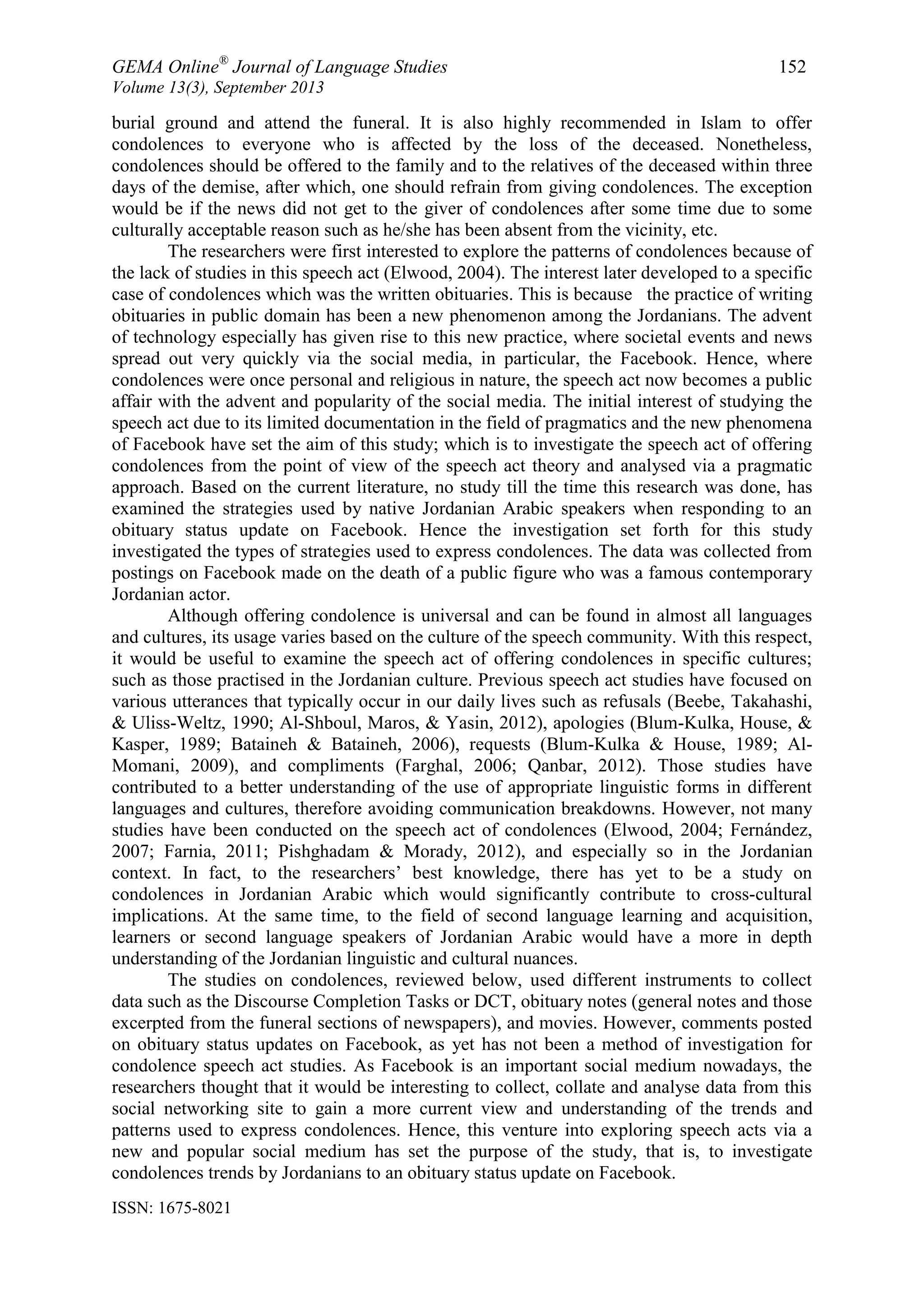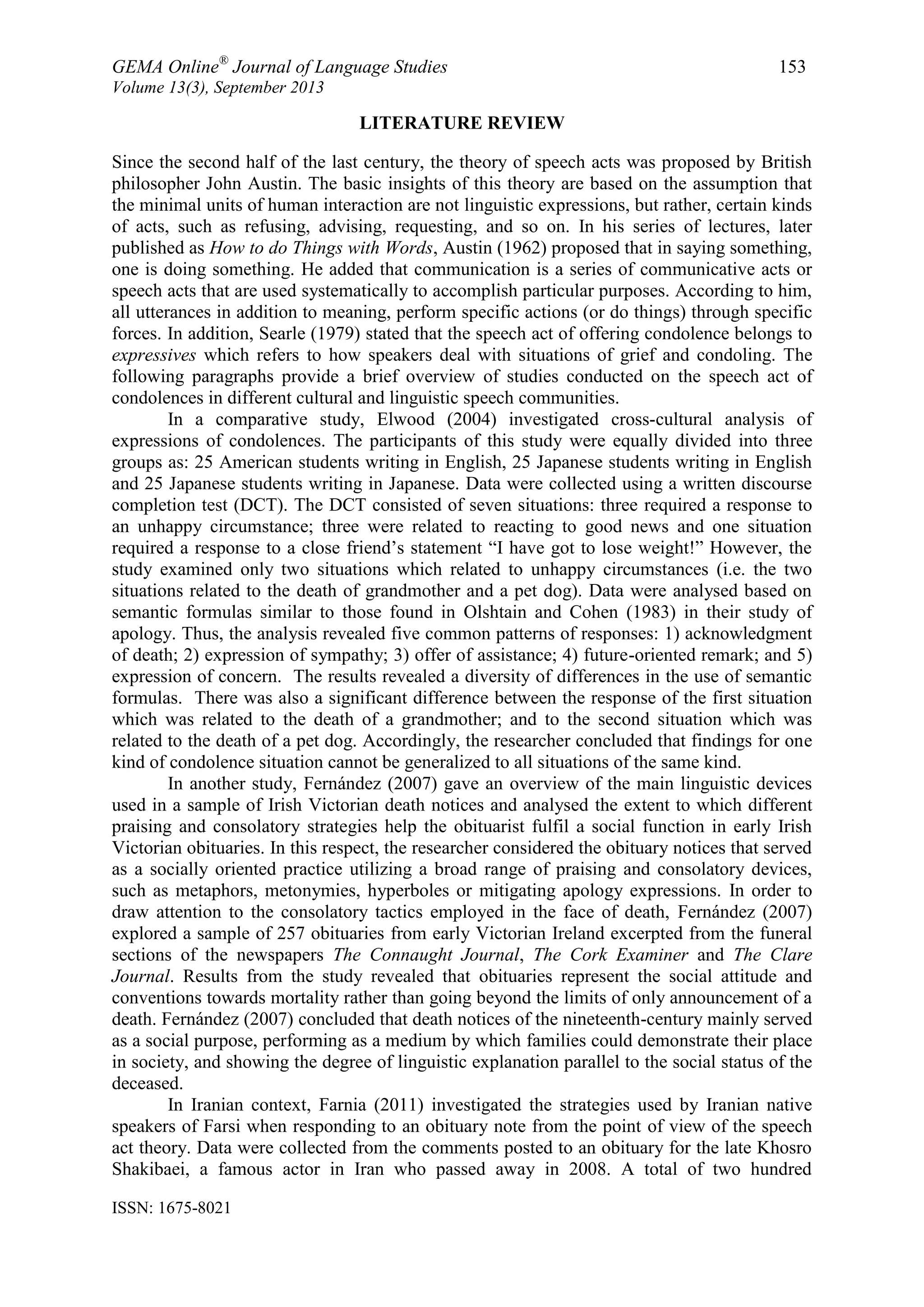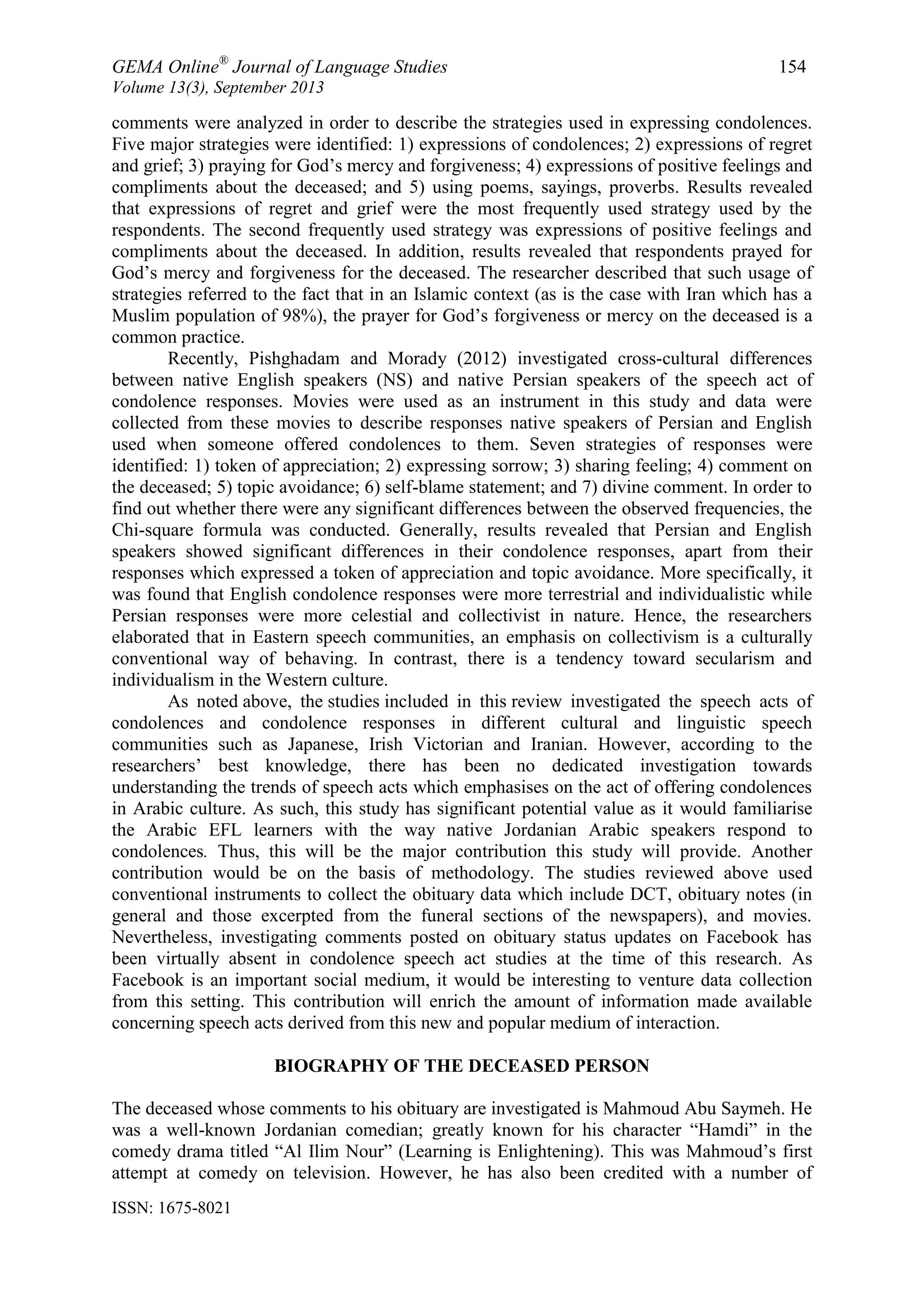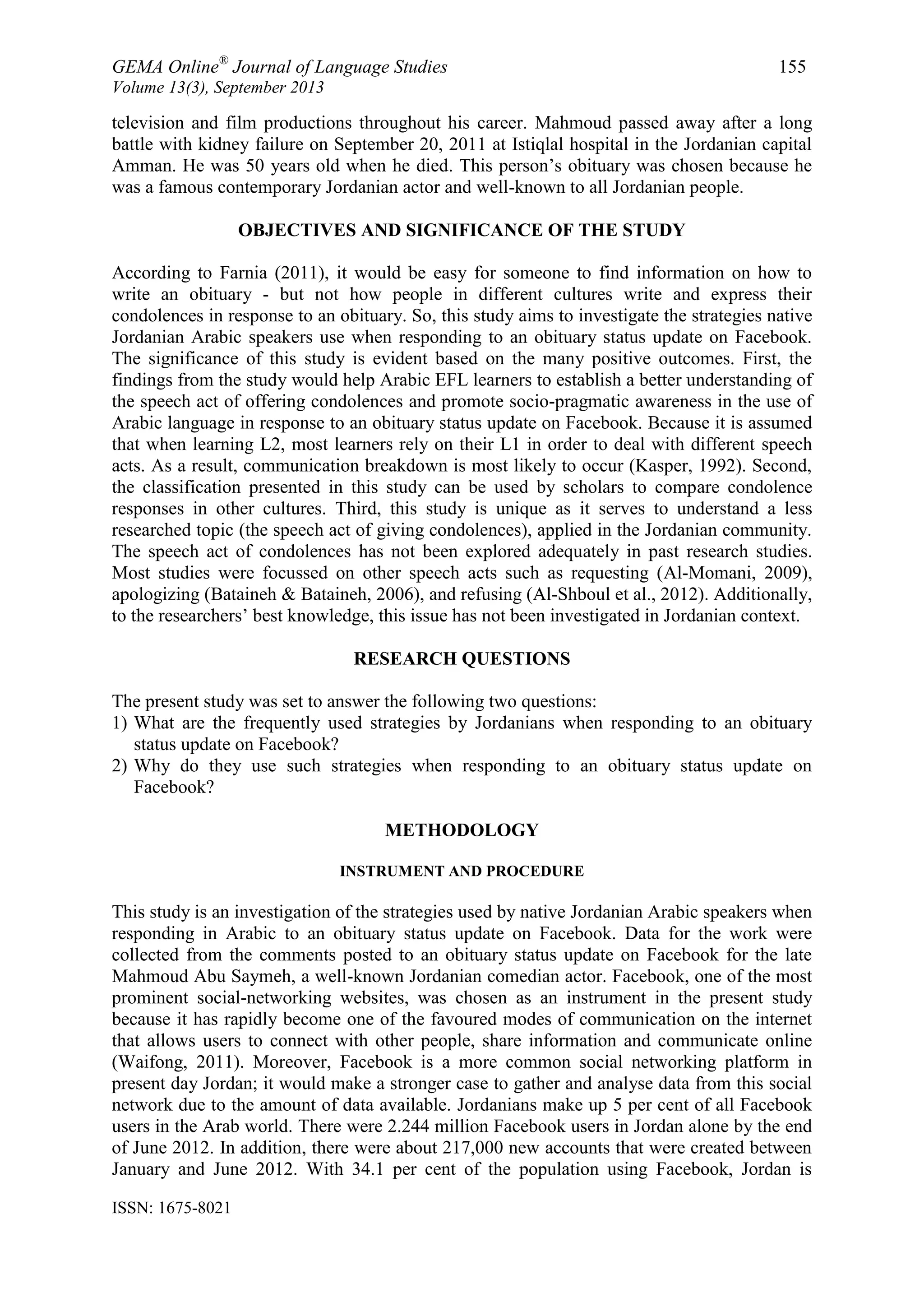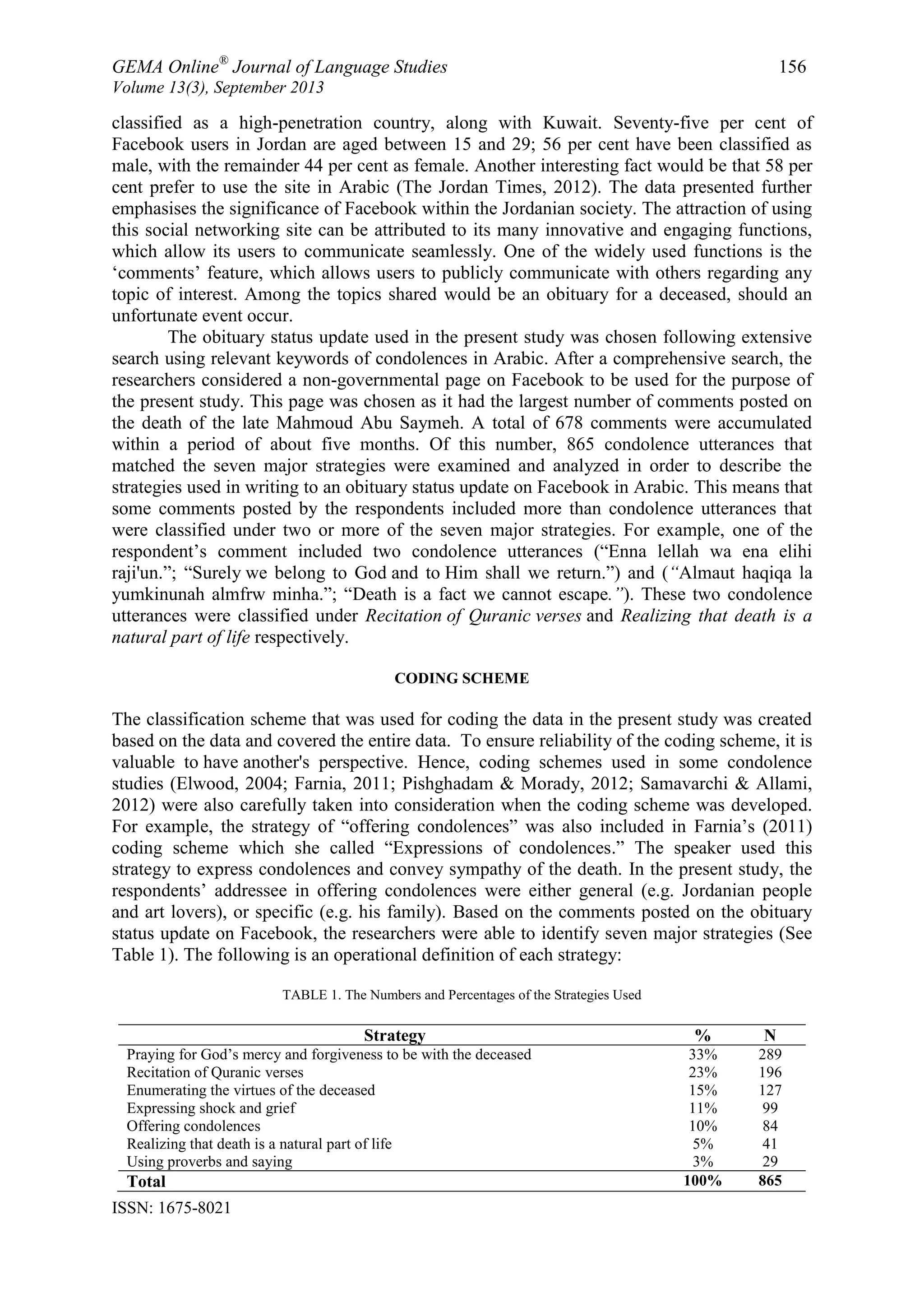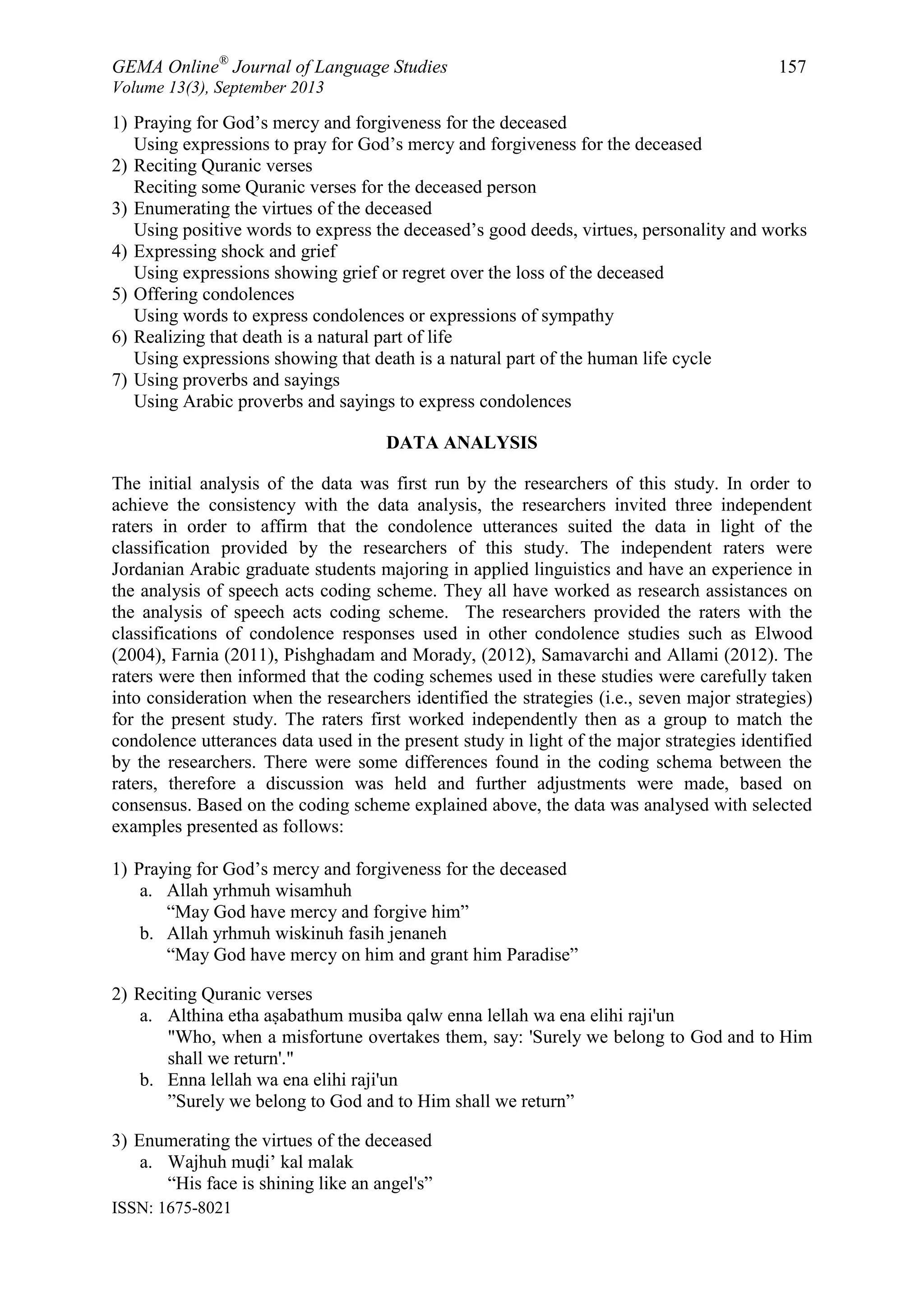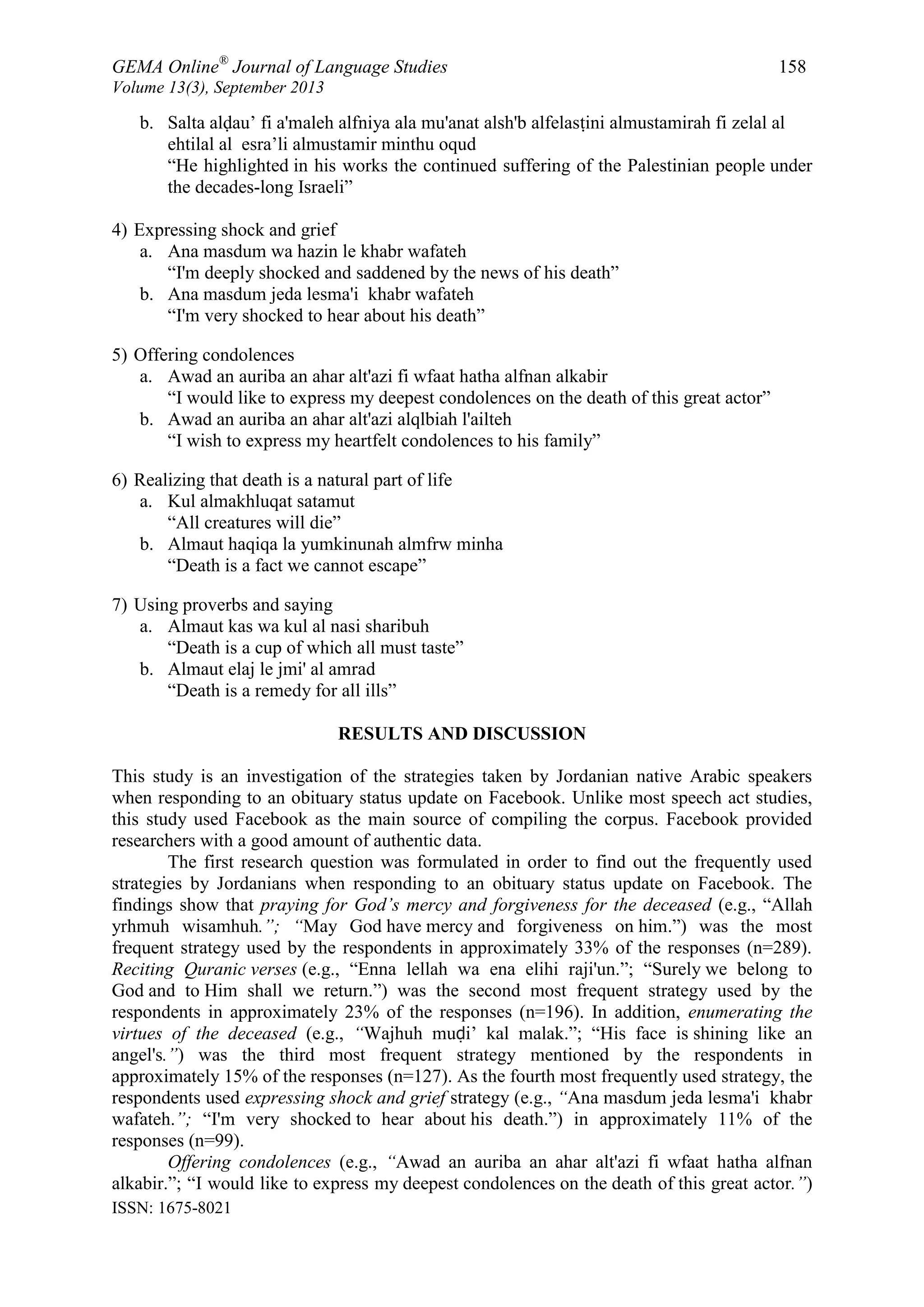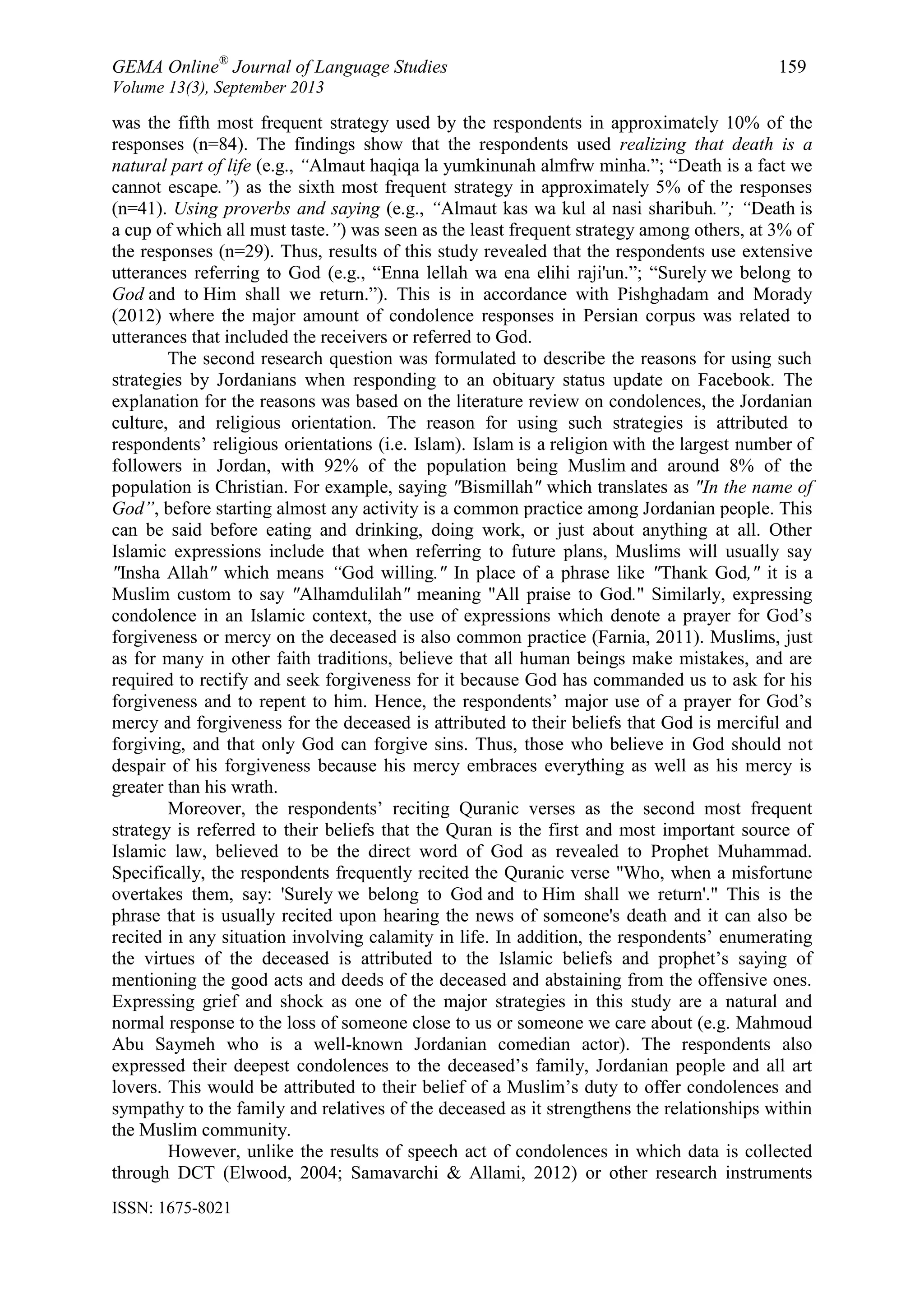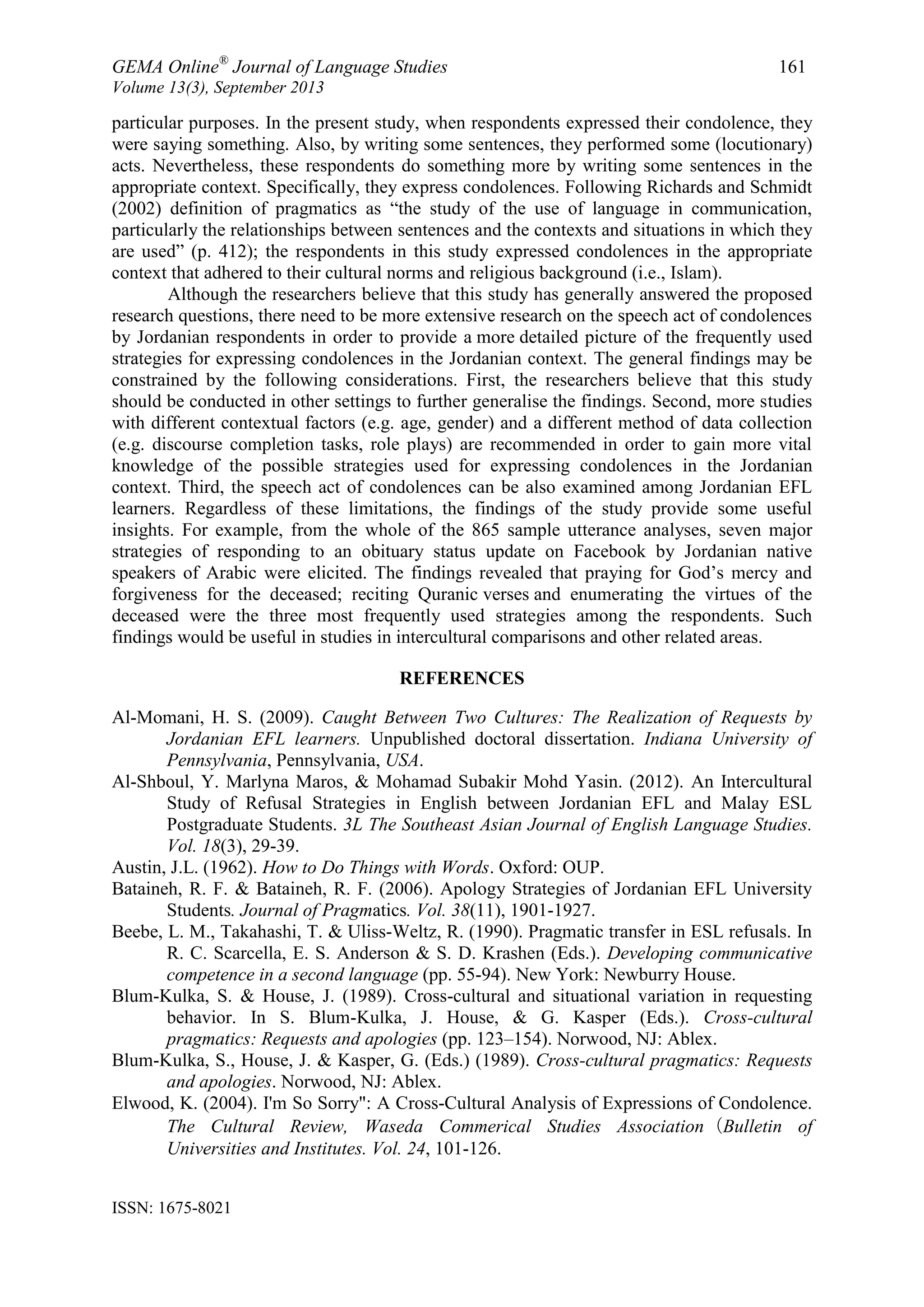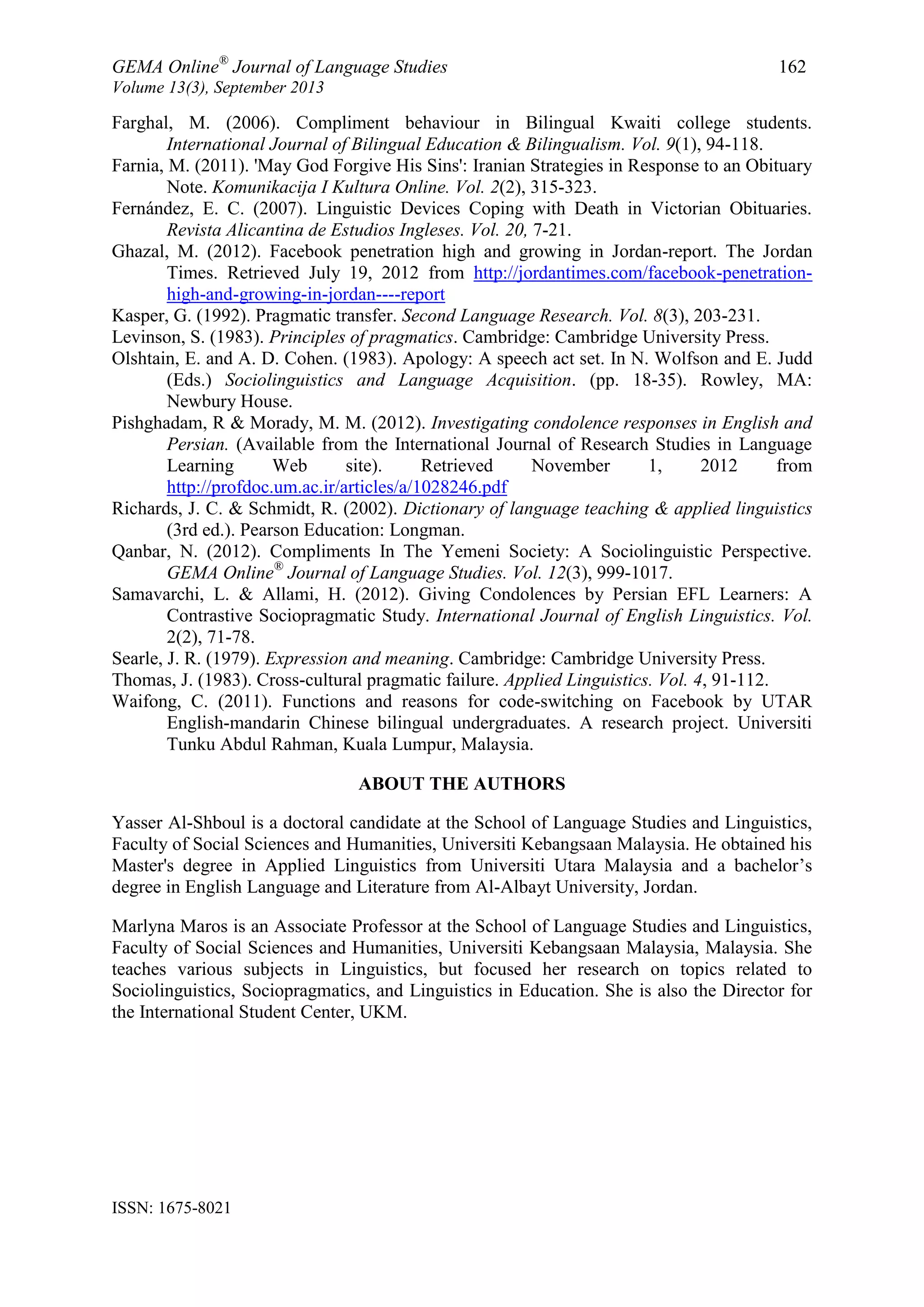This study explores the speech act of offering condolences among native Jordanian Arabic speakers via Facebook in response to an obituary for a deceased actor. Researchers identified seven major condolence strategies, largely influenced by participants' Islamic faith, which include prayers and expressions of grief. The findings contribute to understanding cultural practices surrounding condolences and can inform cross-cultural studies and language learning.
